While heading to the gym yesterday morning, we came across this flock of Pine Grosbeaks feasting on berries.
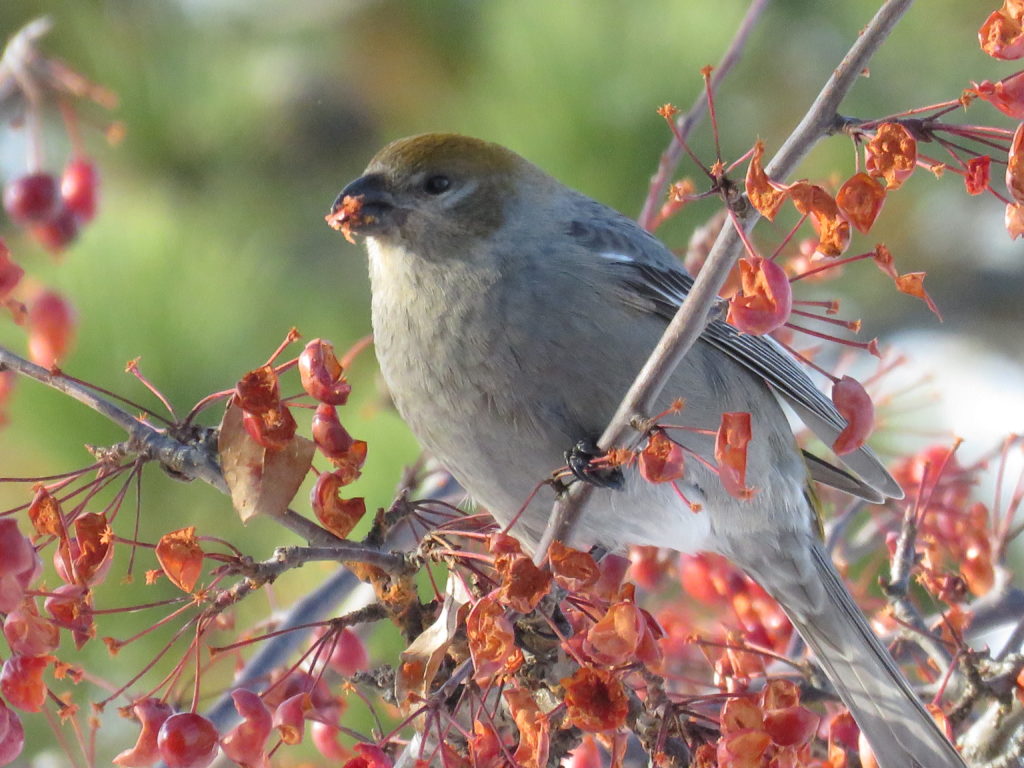
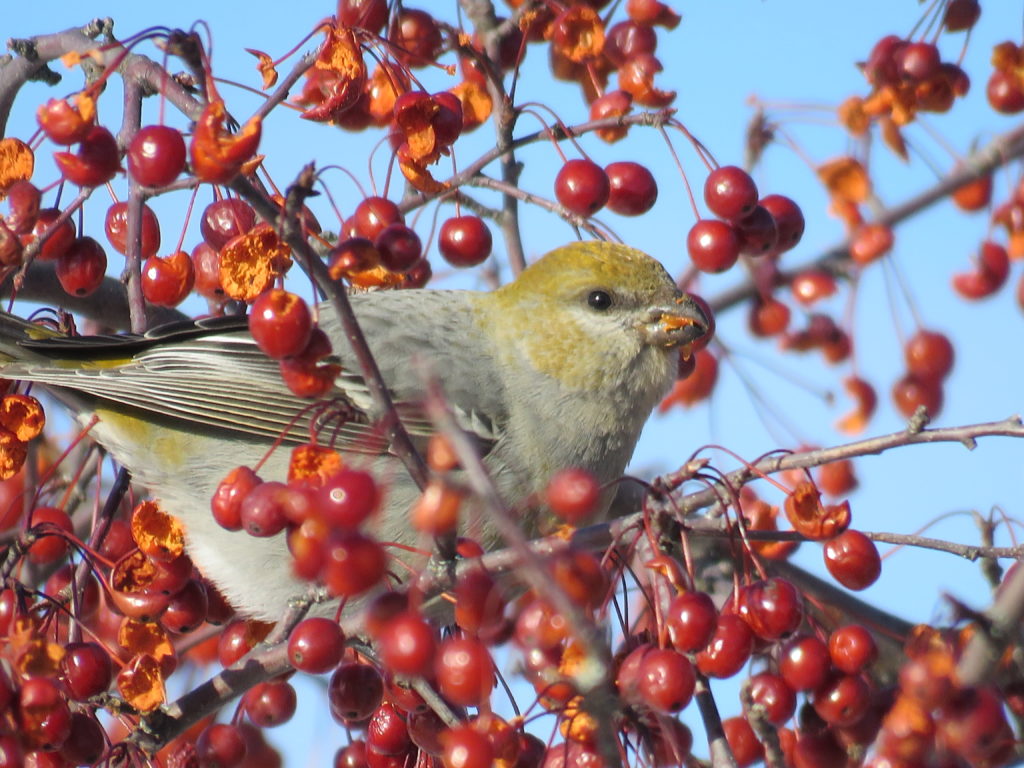
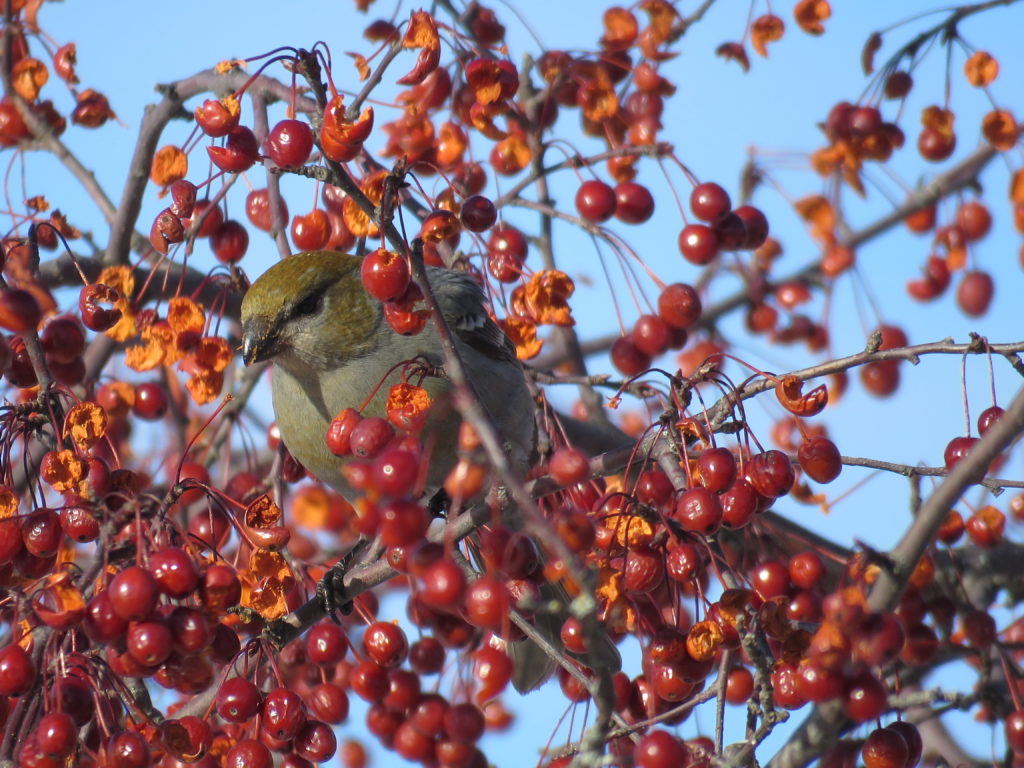
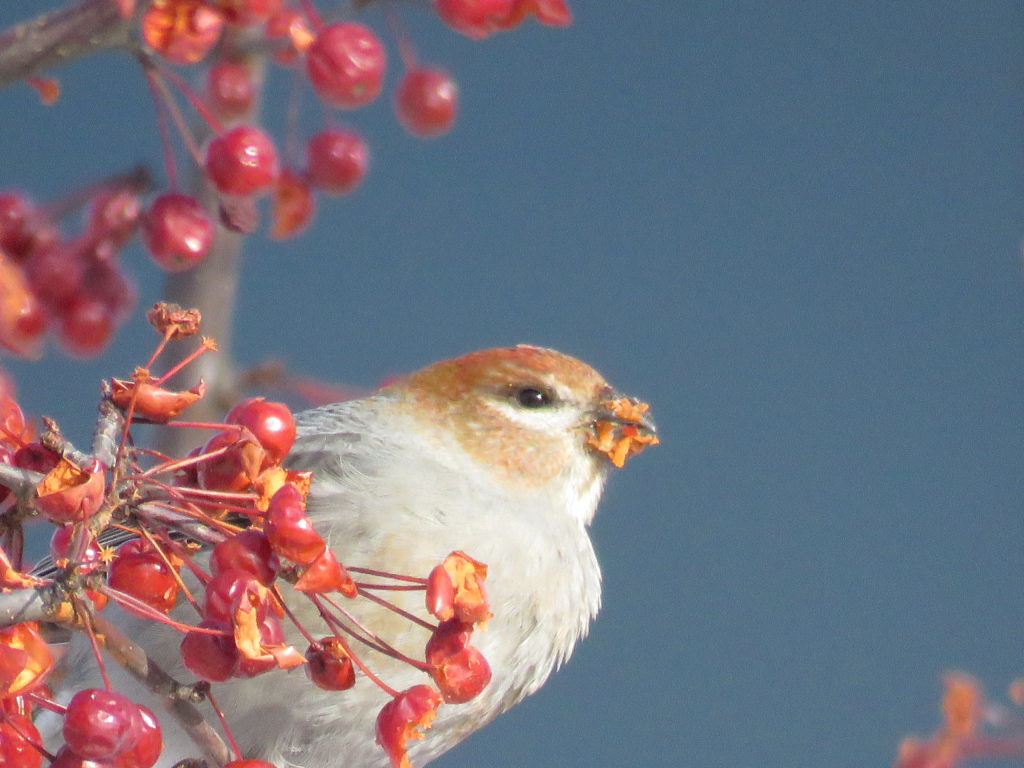
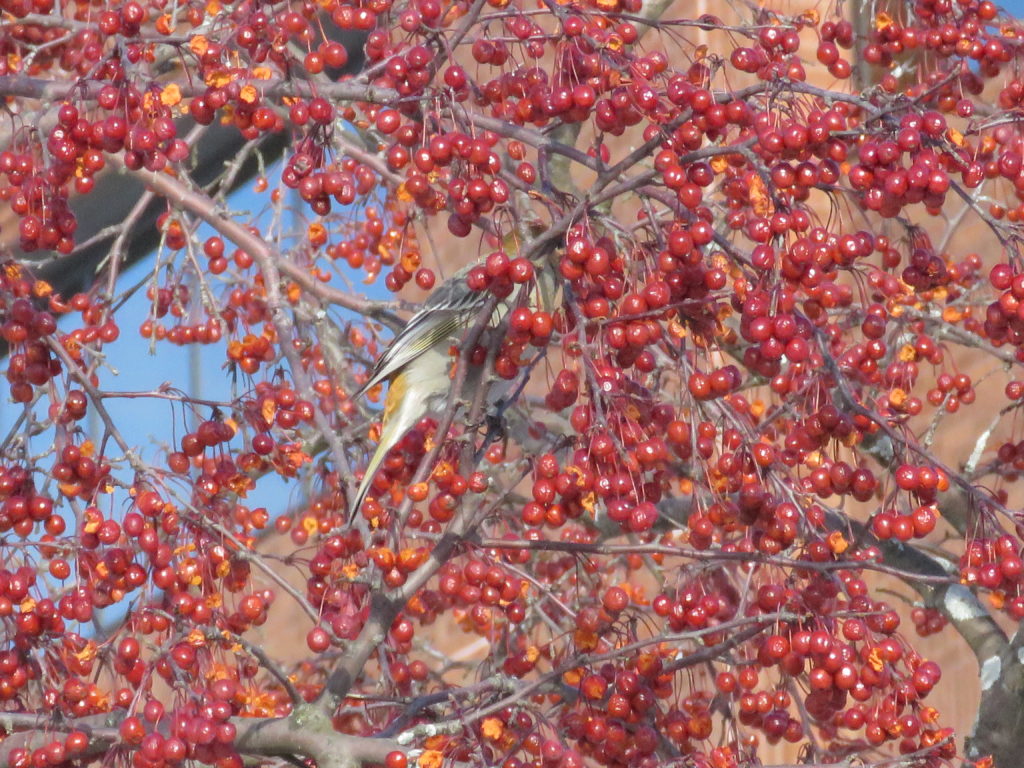
While heading to the gym yesterday morning, we came across this flock of Pine Grosbeaks feasting on berries.





About a week ago, a Snowy Owl was reported at the local airport — and then was unreported for several days in spite of many people looking. Then, Christmas Eve morning, as I was readying for a family visit, I heard that friends had seen it the previous day.The airport was on my route so I stopped, looked without success, and then, with the help of my friend John, who is the facility manager, I found the white adult owl perched on a snowbank in the middle of the field.
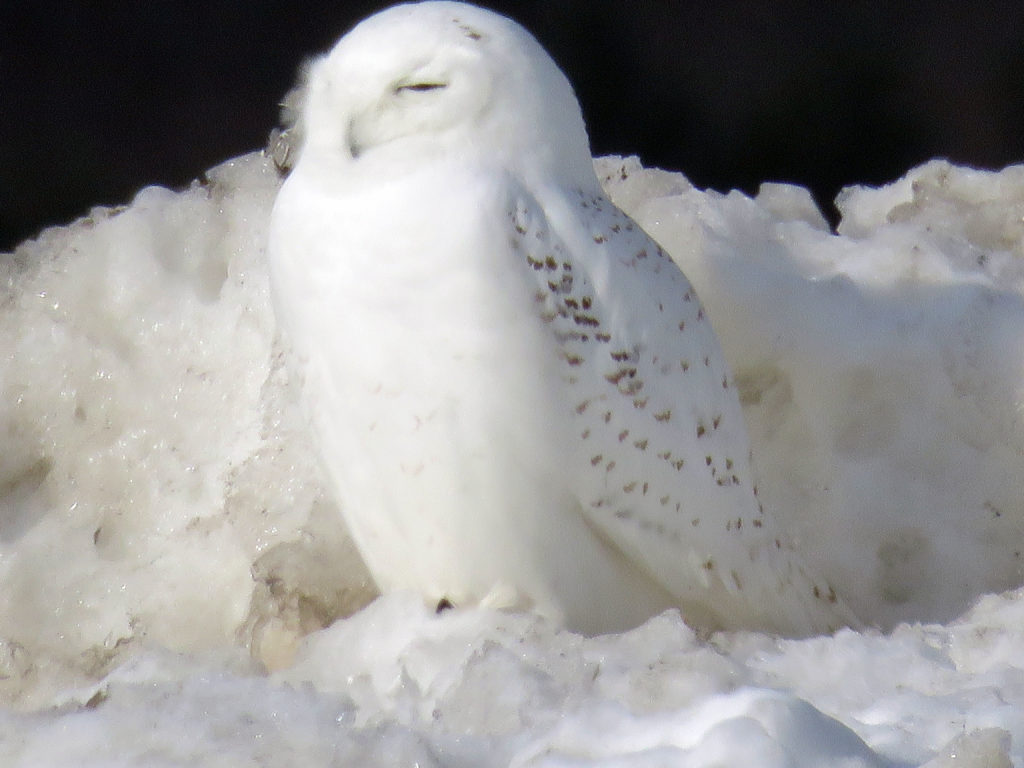
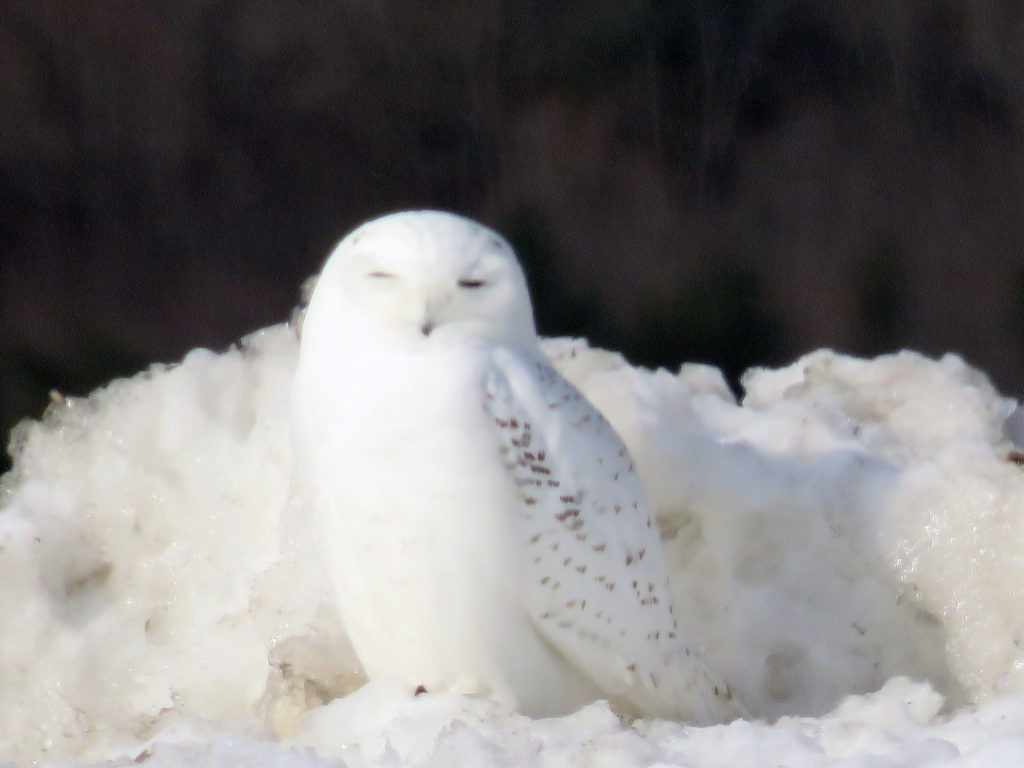
I returned from my trip today and my spouse and I went up and found the bird again, a little further away, but still a wonderful treat. It has been a great holiday present for dozens of Central Vermont birders.
As I sit here watching light snow fall and the temperature hover around 20 degrees, I think back two days when I was a little peevcd about birding in the hot sun and windy, dusty conditions along Del Dios Gorge Trail, a ten-mile trail popular with hikers, mountain bikers, and runners. The Santa Anna winds were stirring up dust and the birds were laying low — but I knew I’d be back in Vermont in two days so I decided to enjoy the warm walk.
It was tough to steady the camera in the stiff wind but this Cassin’s Kingbird was cooperative.
Later up the trail, I saw a couple of Say’s Phoebes.
This was the last warm weather birding for me for a few months and it was a good outing. After a long trip home, we are once again watching winter birds at the feeder.
Downtown LA is sprinkled with a number of small parks – one of which was just up above Sally’s nephew’s home. So early Sunday morning I took a long walk up to Elysian Park – the city’s second largest (600 acres) park which while dry and dusty, is filled with runners, dogs, and birds. Here’s the first one I saw (and was a little unsure on identity but believe it’s a Hutton’s Vireo.)
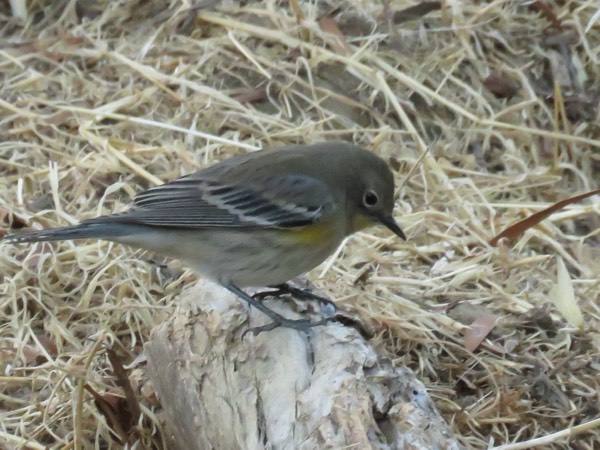
There are also nice views of the city although the visibility was limited by smoke from the fires to the north.
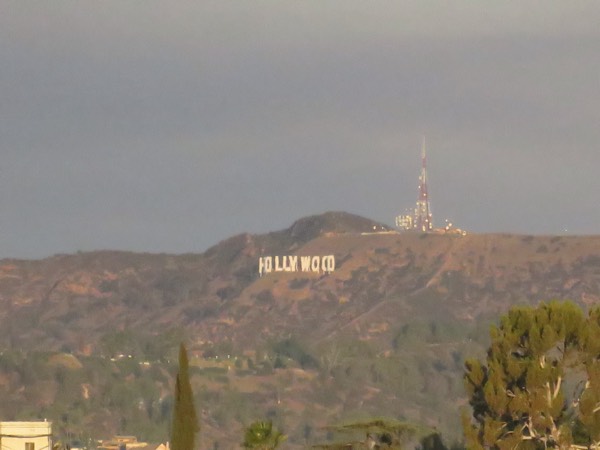
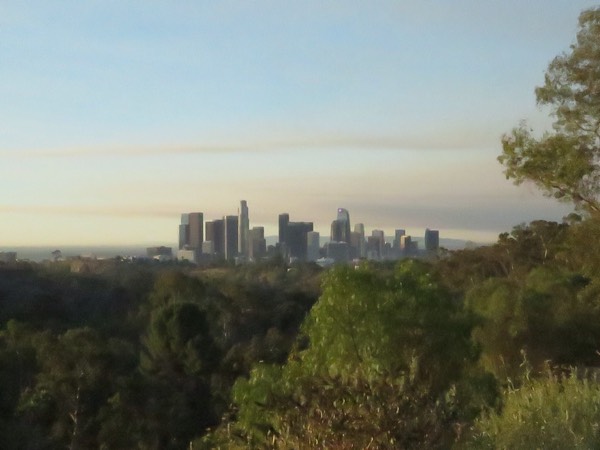
There were many juncos and several towhees along the paths.
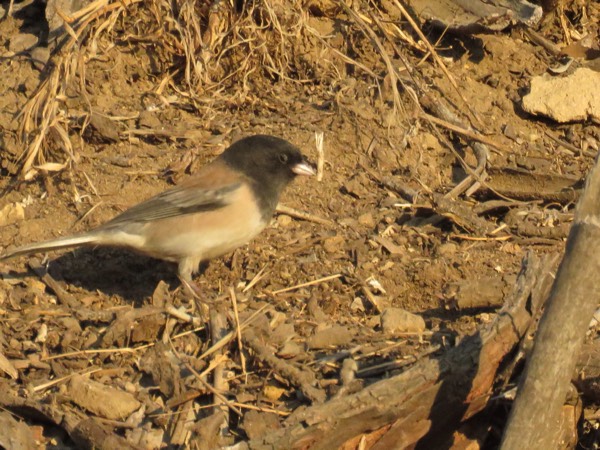
In a section with more greenery, I saw a dozen Black Phoebes, including this one which looks very light in the morning sun.
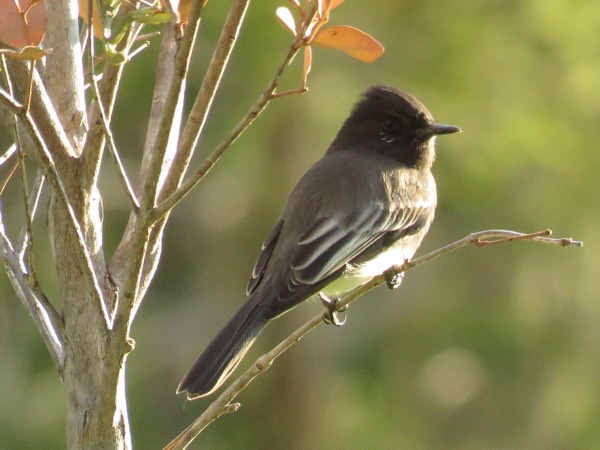
Four Acorn Woodpeckers were making their rounds.
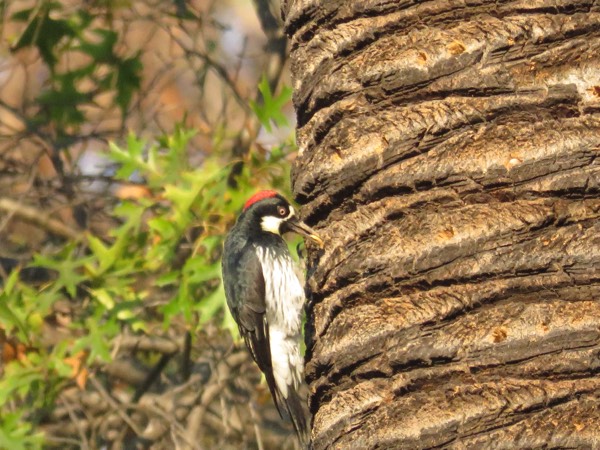
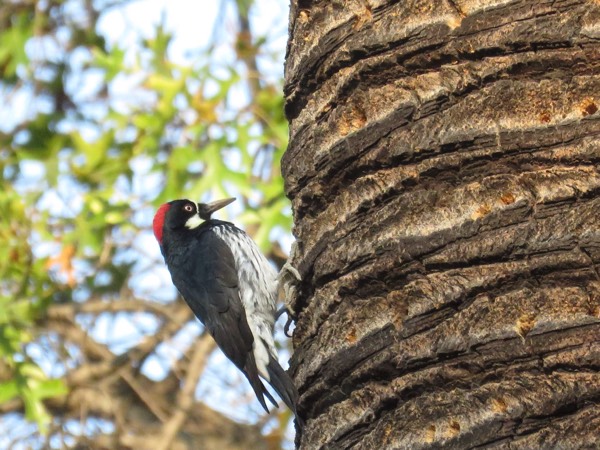
I saw a couple of Western bluebirds, many yellow-rumps, and a host of other species. What a treat to find a great birding in downtown LA.
In a lengthy Uber, Airline, Bus, and Taxi trip from LA through Mexico City, we arrived in Cuernevaca to visit a friend. I did some birding, mainly sitting in her back yard in the early morning, listening to strange bird calls and seeing some old avian acquaintances from Texas birding. Here’s the "sit spot."
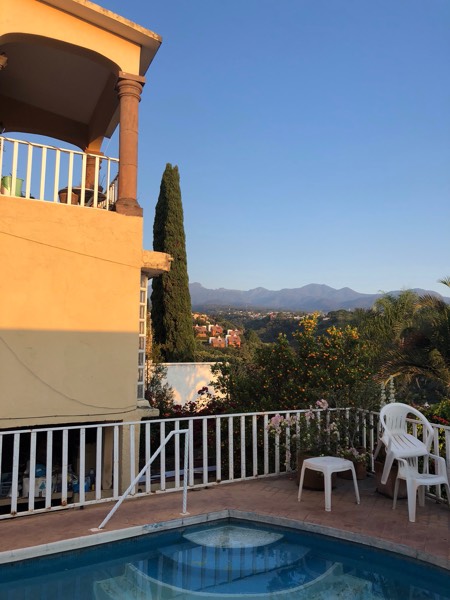
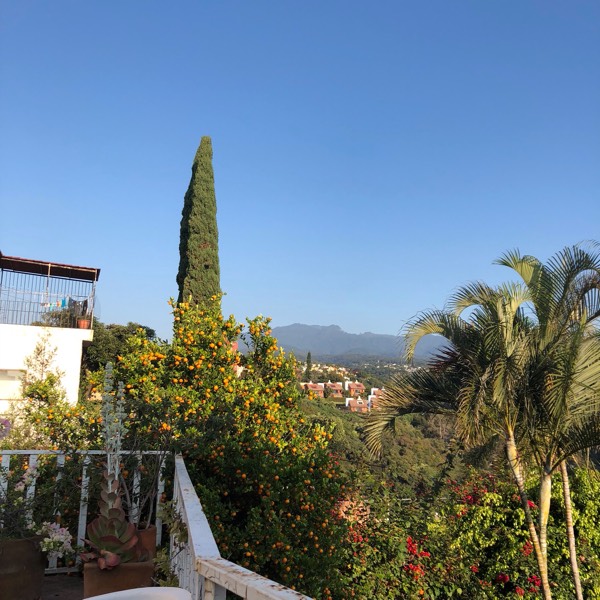
There were dozens of Great Kiskadees and Great-tailed Grackles filling the morning air with familiar calls.
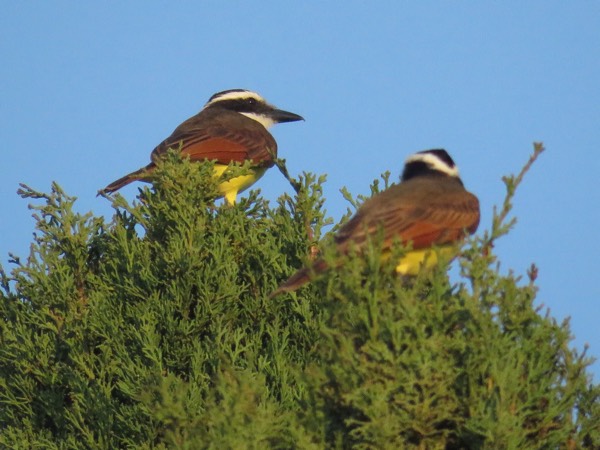
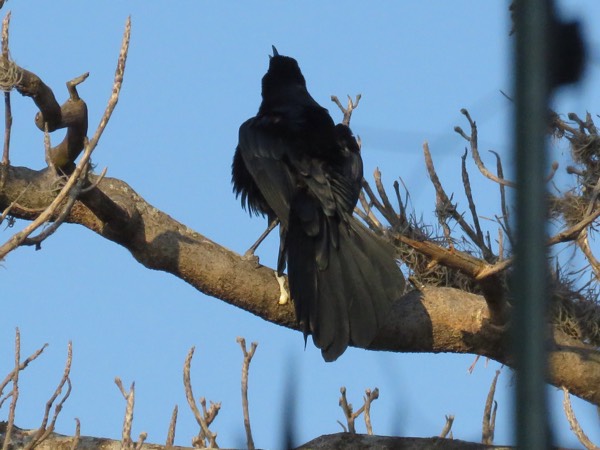
This large insect – almost hummingbird size, was making the rounds.
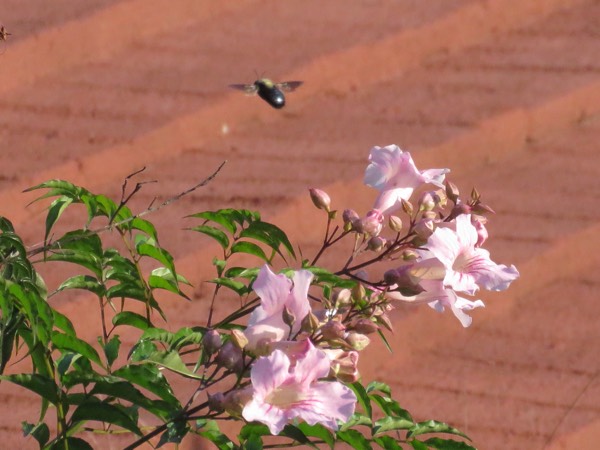
I saw several hummingbirds that I could not identify but this one sat, quite a ways off, for a photo. I’m calling it a Violet-crowned hummer.
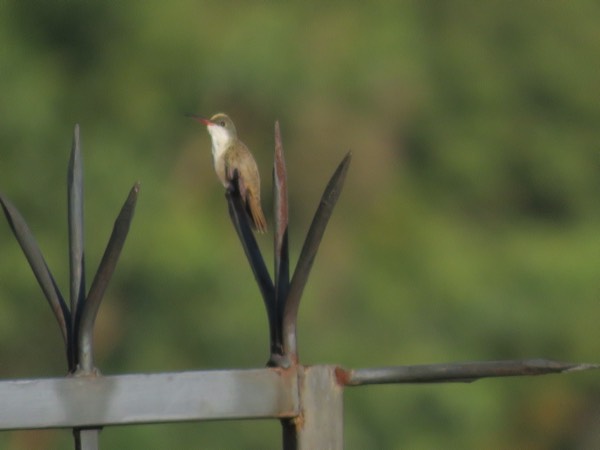
During our one day there, I also saw a lot of birds that we see at home: Turkey Vultures, House Finches, Yellow-rumps, House Sparrows, and a Red-tailed Hawk. Then it was time to make the long trip back to LA. Note to self: Don’t schedule arrival on a Friday night in LA. Adios amigos.
We escaped the ugly Vermont weather for some time in Southern California and Mexico, visiting friends and relatives and to do some birding in shorts. Today we walked barefoot on the beach and saw lots of surfers and birds. In learning how to do wireless photo transfer, I lost several nice shots but here are a few that were left.
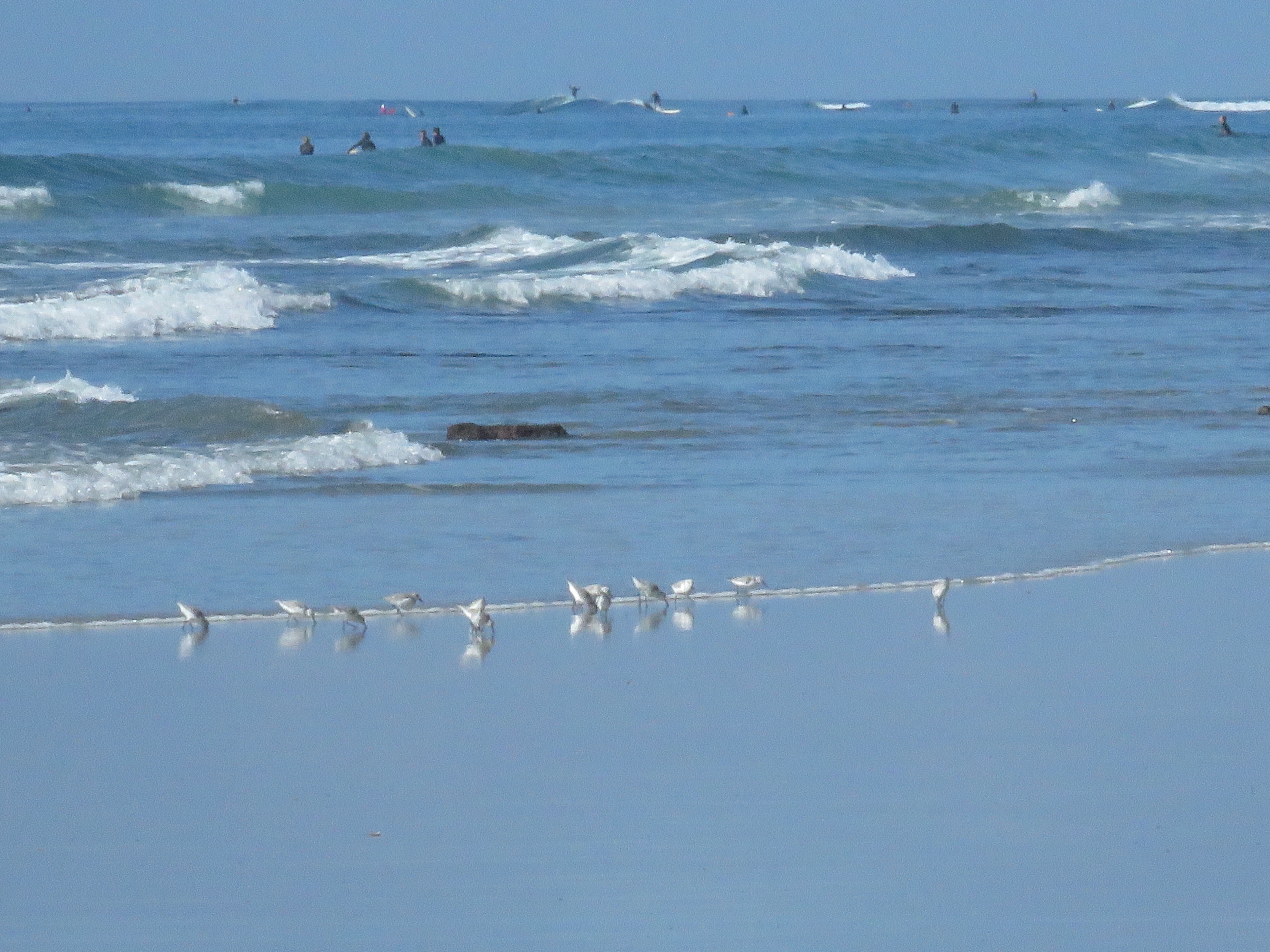
Sanderlings cavorting with surfers out further
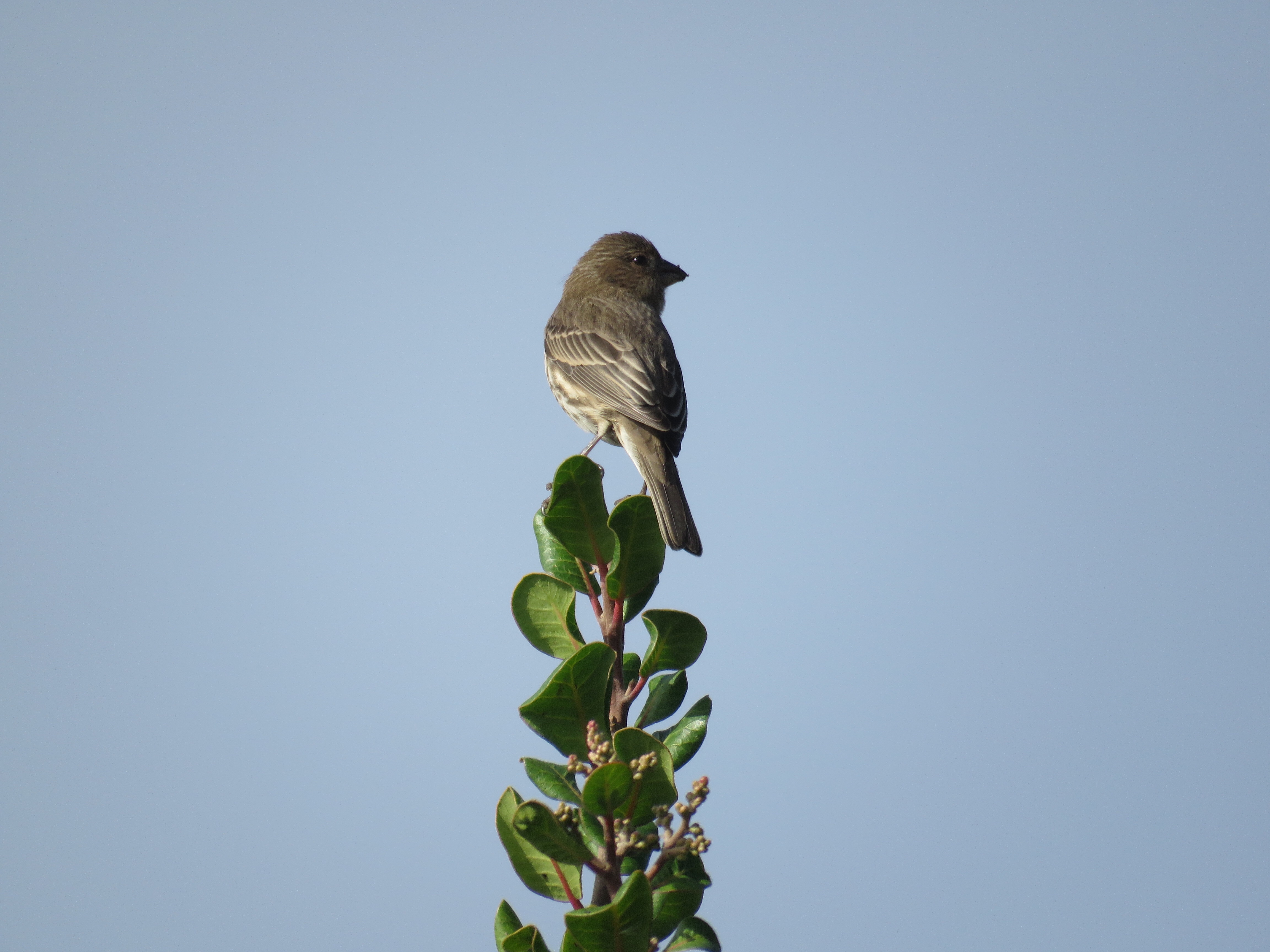

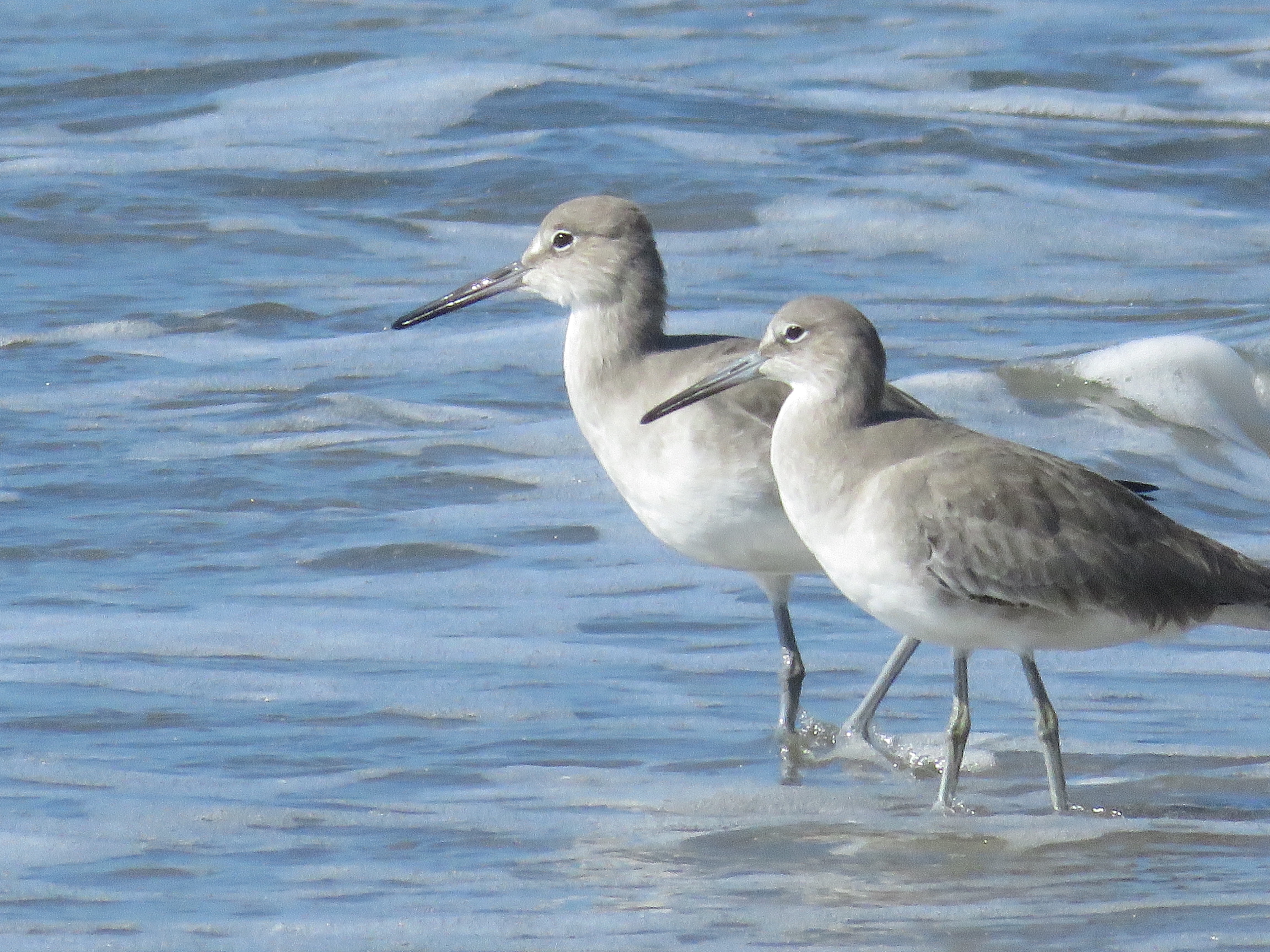
I mentioned earlier that the little preserve that we visit is the largest wetlands on the Granada coast and is tucked into an 18 hectare plot in Motril. The birds love it, as do we. Yesterday, we saw a number of Red-knobbed Coots, a rare bird that is still in danger but is restored to Spain as well as other water-loving birds.

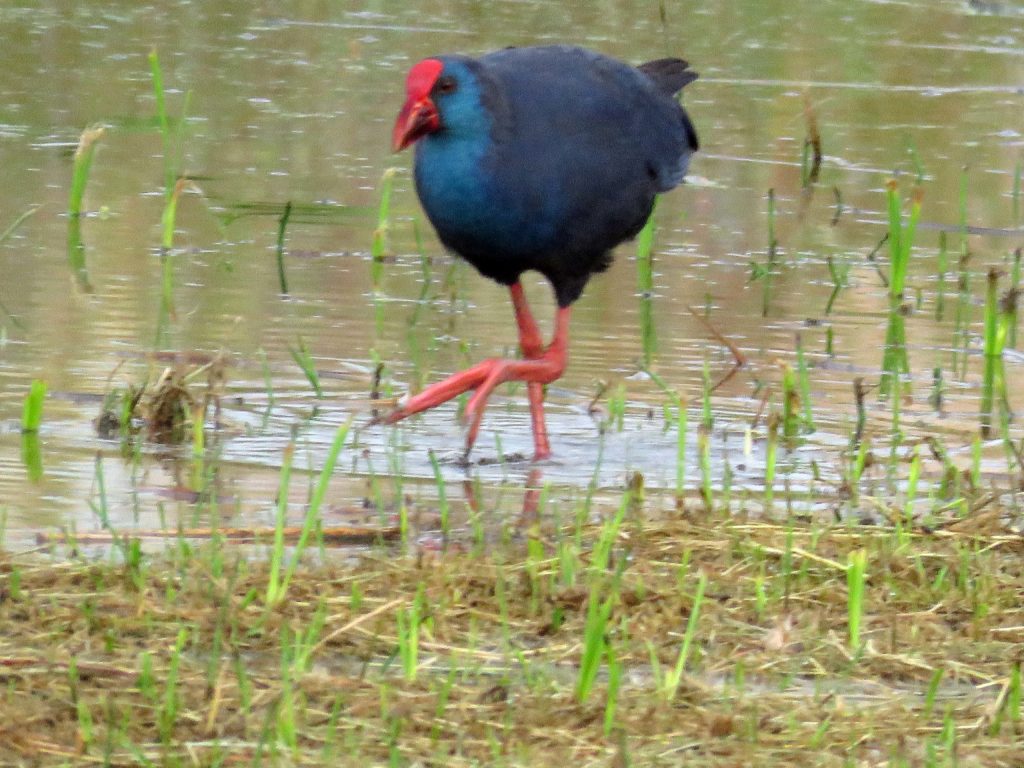
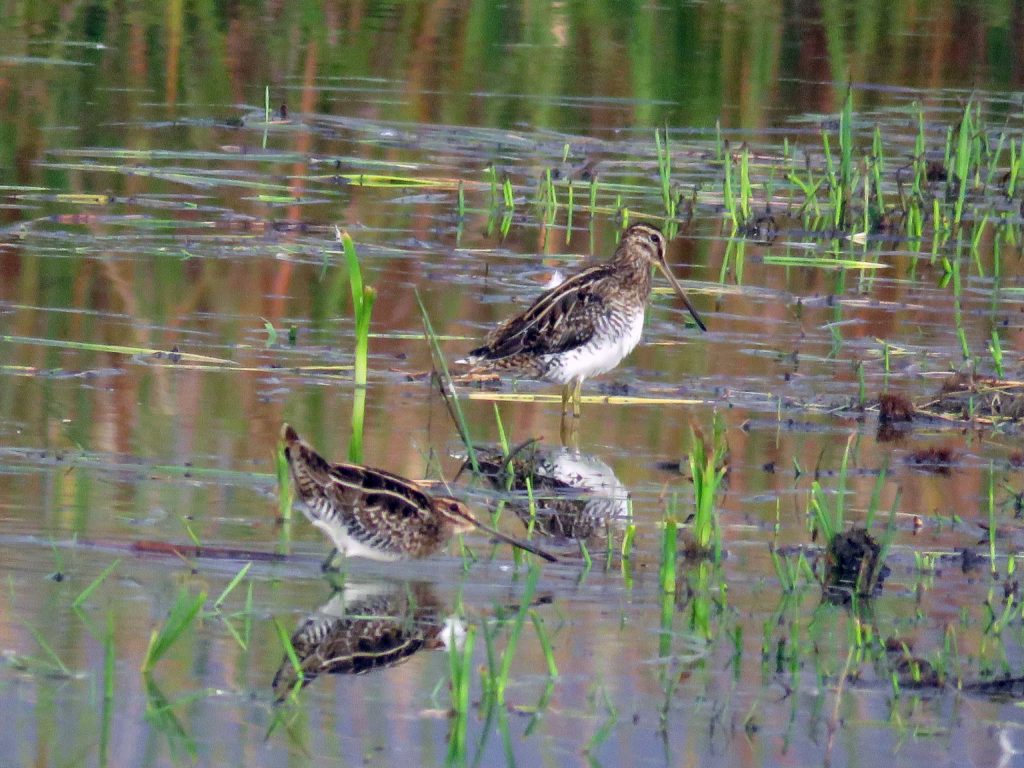

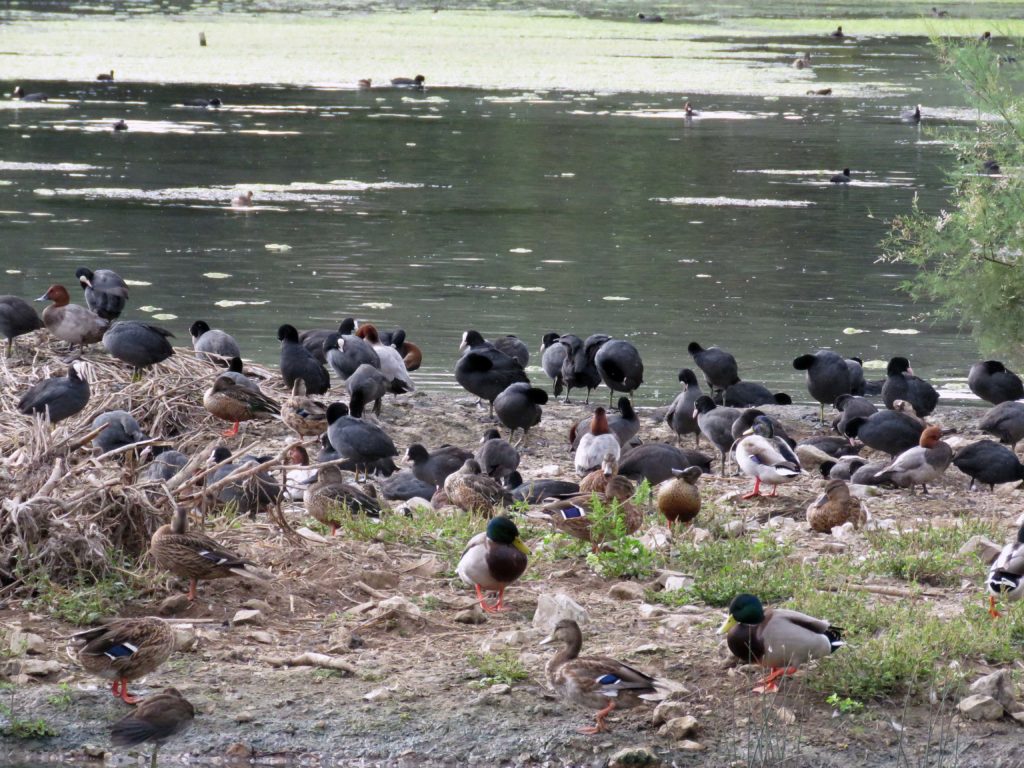
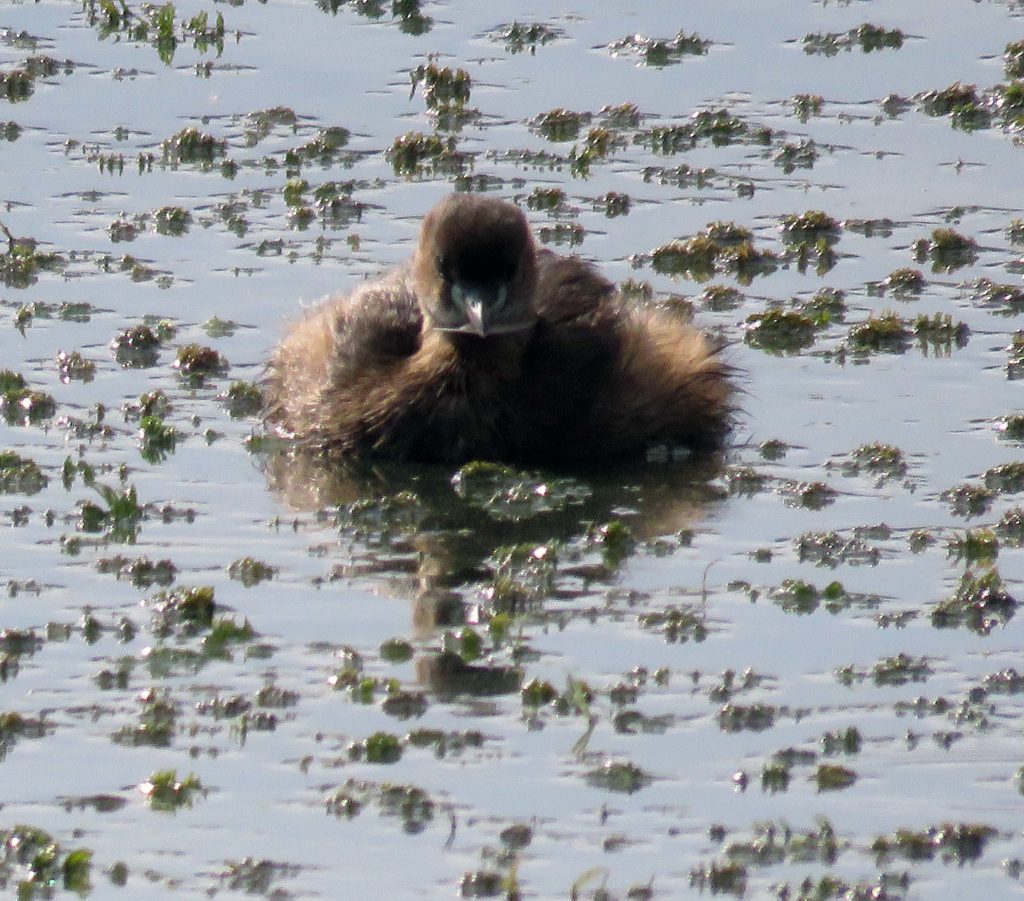
We are leaving in a few days but still doing some rooftop birding from the terrace. Adios desde Espana
Kingfishers are perhaps our favorite bird – we see them all summer on the river in Vermont, have been delighted by them in Texas and Ecuador, and as I noted a couple of post ago, caught a glimpse of one in Spain. This morning, we went back early to the Charca de Suarez to try to see him again. Sure enough, he showed up in the same small lagoon.
The bird is small (sparrow-sized) and flies fast so it is a challenge to photograph with the Canon SX-60 but he gave us some nice far-away looks.
There’s a great write-up on the bird here if you want more information. Gracias, mi amigos.
Several birds here in Spain – Rock Doves, Mallards and Northern Shovelers come to mind – seem to be about the same as in the U.S. The Little Egret is just like its close relative, the Snowy Egret, that we see in Texas and other southern states. Great to watch this patient hunter.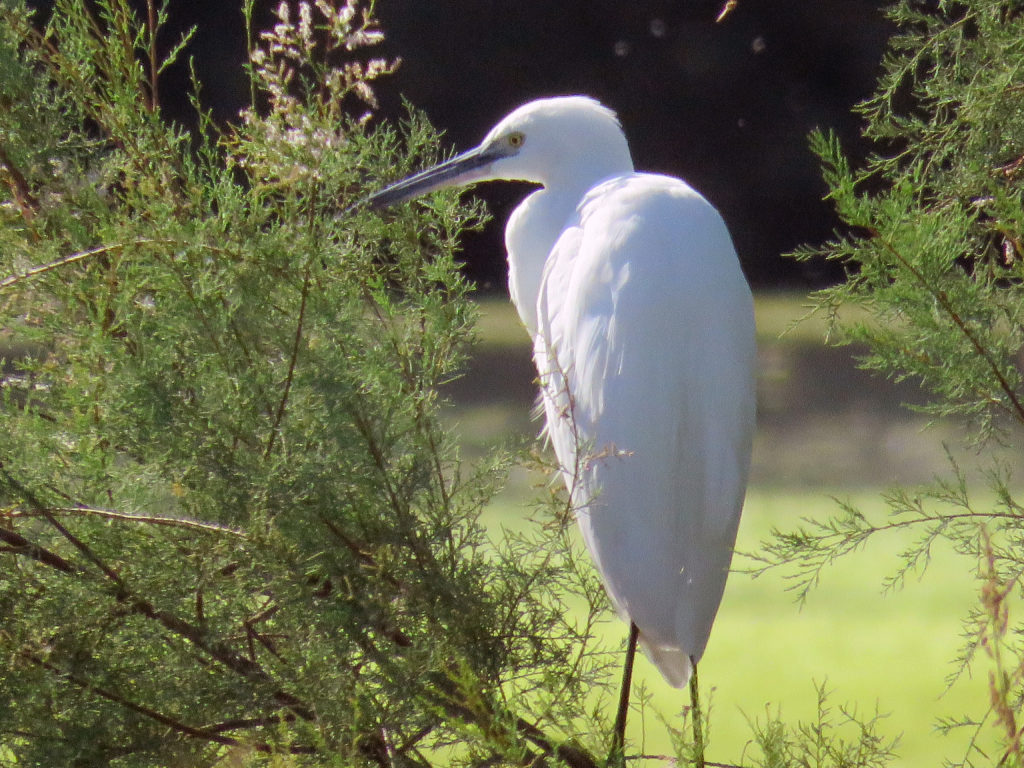
This morning, we went over to a small park in the neighboring town – Charca de Suarez – which is the largest wetland along the Granada coast. It is a challenge to identify birds we’ve never seen but we had a great session. The highlight was probably this White Stork.
Grey Herons are stately and photogenic.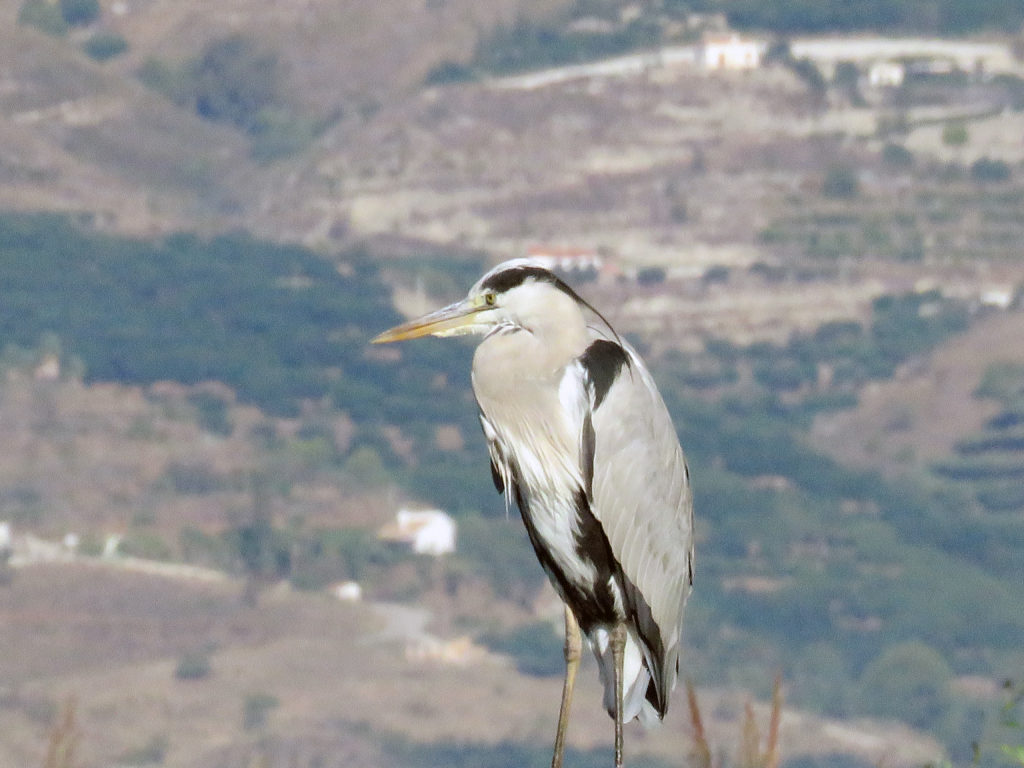
Can you find this next bird — look for green and red.
A nice outing at a lovely site right in the midst of condos and industry.